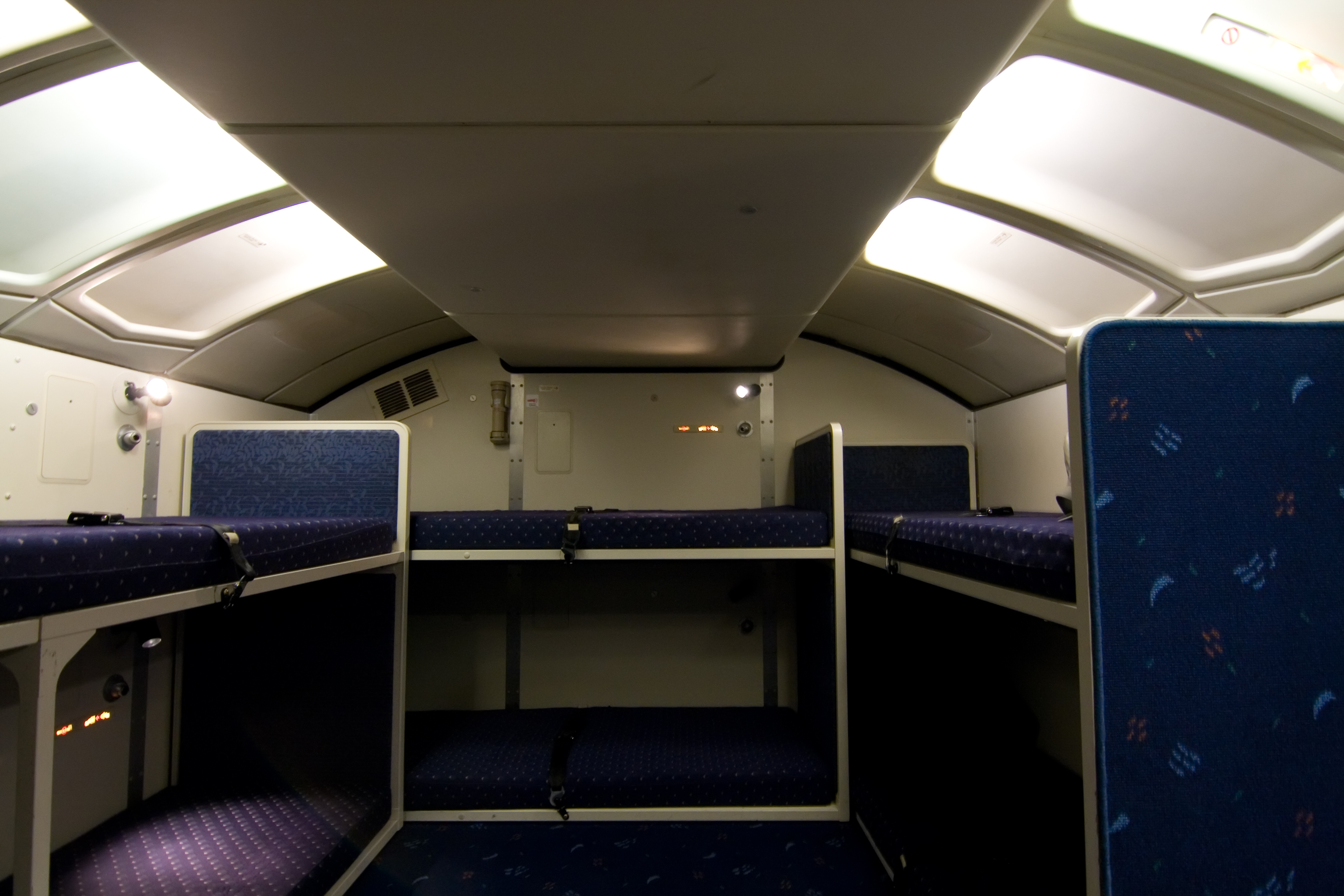Crew rest compartment on:
[Wikipedia]
[Google]
[Amazon]
A crew rest compartment (crew rest) is a section of an  On long flights, crew members may sleep in crew rest compartments during off-duty periods.
On long flights, crew members may sleep in crew rest compartments during off-duty periods.  The FAA rest facility classifications from highest to lowest:
* Class 1 rest facility: This class requires access to an area physically separated from the
The FAA rest facility classifications from highest to lowest:
* Class 1 rest facility: This class requires access to an area physically separated from the
airliner
An airliner is a type of aircraft for transporting passengers and air cargo. Such aircraft are most often operated by airlines. Although the definition of an airliner can vary from country to country, an airliner is typically defined as an ai ...
dedicated for breaks and sleeping by crew members, usually located above or adjacent to the passenger compartment. Crew rest compartments are normally segregated, with separate compartments for the flight crew and the cabin crew.
 On long flights, crew members may sleep in crew rest compartments during off-duty periods.
On long flights, crew members may sleep in crew rest compartments during off-duty periods. Federal Aviation Regulations
The Federal Aviation Regulations (FARs) are rules prescribed by the Federal Aviation Administration (FAA) governing all aviation activities in the United States. The FARs comprise Title 14 of the Code of Federal Regulations (CFR). A wide variety ...
have provisions requiring crew rest areas be provided in order to operate a long flight by using multiple crew shifts.
Passengers are restricted from accessing crew rest compartments by regulations; their entrances may be secured by locks and may require ascending a ladder for access.
Crew rest compartments may not normally be used during taxi, takeoff, or landing maneuvers (TT&L). In flight crew rests that contain standard seats, an exception may be made to allow seated crew during TT&L.
In the United States, the Federal Aviation Administration
The Federal Aviation Administration (FAA) is the largest transportation agency of the U.S. government and regulates all aspects of civil aviation in the country as well as over surrounding international waters. Its powers include air traffic ...
(FAA) defines three classes of crew rest facilities, dependent on the number of crew and the duration of the flight. Crew rest periods may be provided in higher classed rest areas than required, for example some airplanes may not have a class 2 rest facility, providing breaks in a crew rest.
 The FAA rest facility classifications from highest to lowest:
* Class 1 rest facility: This class requires access to an area physically separated from the
The FAA rest facility classifications from highest to lowest:
* Class 1 rest facility: This class requires access to an area physically separated from the cockpit
A cockpit or flight deck is the area, usually near the front of an aircraft or spacecraft, from which a pilot controls the aircraft.
The cockpit of an aircraft contains flight instruments on an instrument panel, and the controls that e ...
and the passenger cabin; contain bunks or other flat areas for sleeping; have provisions for sound and lighting isolation.
* Class 2 rest facility: This class requires access to at least a lie flat seat and separation from passengers by a curtain.
* Class 3 rest facility: This class only requires a cabin seat that is able to recline and has foot support.
Crew rest design and safety considerations are similar between international regulators, for example the European Aviation Safety Agency
The European Union Aviation Safety Agency (EASA) is an agency of the European Union (EU) with responsibility for civil aviation safety. It carries out certification, regulation and standardisation and also performs investigation and monito ...
(EASA) regulations for access control, communications, and signage are similar to those of the FAA's. By following such regulatory Bilateral Aviation Safety Agreements (which avoid contradictory minimum specifications), aircraft manufacturers can design crew rests to meet the requirements in many markets.
Aircraft with crew rest compartments
References
External links
{{Commercial air travel, state=collapsed Aircraft cabin components Night flying